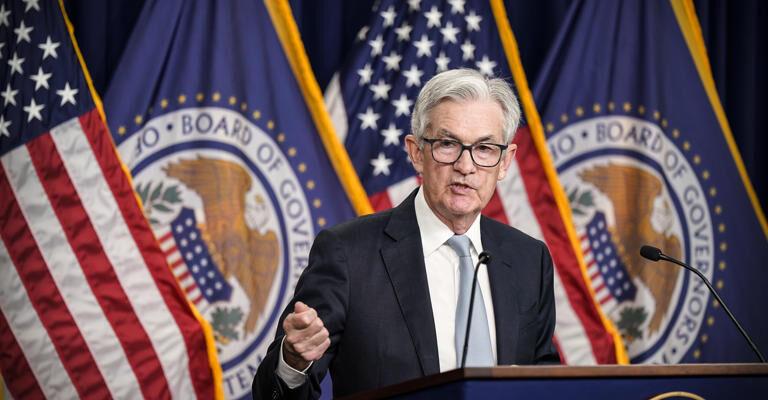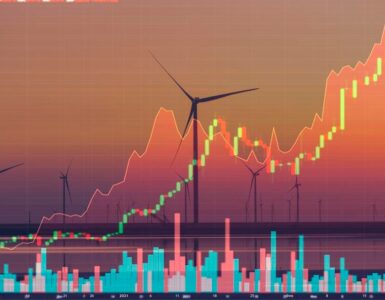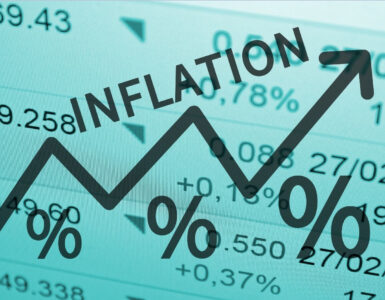On the heels of Tuesday’s lower-than-expected inflation reading, the Federal Reserve is expected to tap the brakes Wednesday on its aggressive rate-raising plan designed to cool price growth in the U.S. economy.
The question now is whether the Fed will have proven too aggressive in seeking to slow the economy and end up causing a recession that leads to higher-than-expected job losses.
The Labor Department on Tuesday reported that annual inflation clocked in at 7.1% in November — the lowest reading in more than a year. While it is still high compared to the 2% level at which the Federal Reserve typically seeks to hold down inflation, the most recent number signals that the galloping price growth earlier this year is fading.
As a result, market analysts expect the Fed to announce another interest rate increase Wednesday, most likely smaller than the last four boosts, which were 0.75%.
The central bank has sought to increase the cost of borrowing and investing to pull back on price increases.
It appears to be working. In addition to the slower price growth, layoff announcements are mounting. To be clear, the Fed does not seek to create conditions that accelerate the need for job cuts. But the monetary tools it uses to keep inflation under control can, in some cases, lead to an economic slowdown that may force some businesses to reduce the size of their workforces.
Additional data this week from the New York Federal Reserve showed U.S. consumers now see inflation a year from now running at 5.2%, down by 0.7 percentage points from the previous month and the lowest year-ahead expectation since August 2021.
In fact, many investors are shifting their concerns from pervasive inflation to rapidly weakening growth, The Wall Street Journal reported Monday. Notably, demand for bonds has increased, reflecting growing interest in more stable returns that are often correlated with slower economic growth.
Out with inflation worries, in with recession fears
Key stock market gauges, meanwhile, continue to decline on concerns about flagging corporate earnings.
“What we’ve seen over the past month is weakness in energy, weakness in the financial sector, weakness in the stock market and then [Treasury] rates going nowhere,” said Michael Antonelli, the managing director at the financial services group Baird. “That’s a recipe for a market more worried about an economic slowdown than inflation. If it was still worried about inflation, then interest rates, energy and banks would all be higher. So all the telltale signs of inflation have all reversed.”
Even as signs point to softening price growth, the Fed must convince consumers and investors alike that it intends to stay the course on getting inflation under control, said Gregory Daco, the chief economist at EY-Parthenon, a unit of Ernst and Young LLP. That means it will continue to signal, for now, that it does not foresee any rate cuts in the near future.
“The last thing the Fed wants to have is the tightening of financial conditions that are now priced in to get reversed,” he said.
Still, analysts agree the Fed need not be as aggressive as it was forced to be for much of the year.
“Fed messaging is probably past peak hawkishness,” Bank of America economists said in a note Tuesday.
But it is increasingly likely that the Fed not only plans to halt rate hikes in the coming months; it also must begin planning for ways to reinvigorate a flagging economy.
In a note to clients Tuesday, James Knightley, the chief international economist at ING, said the “recessionary forces” coming to bear — like easing supply chain challenges, higher borrowing costs, slowing demand overseas and lower global energy prices — will mean the Fed could start cutting rates in the second half of 2023.
Mark Hamrick, a senior economic analyst at Bankrate, said in a note Tuesday that while a recession in 2023 is not a sure thing, there is now broad agreement that the risks of one remain and that the trade-off has already been made.
“To relieve individuals, households and businesses of historically high inflation, the Fed has been prepared to accept the risk of a recession if it achieves the mandate of stable prices,” Hamrick said.
“Choosing from the least of two evils, it isn’t dissimilar from when firefighters trade some damage from water for fire damage.”
This article was originally published on NBCNews.com










